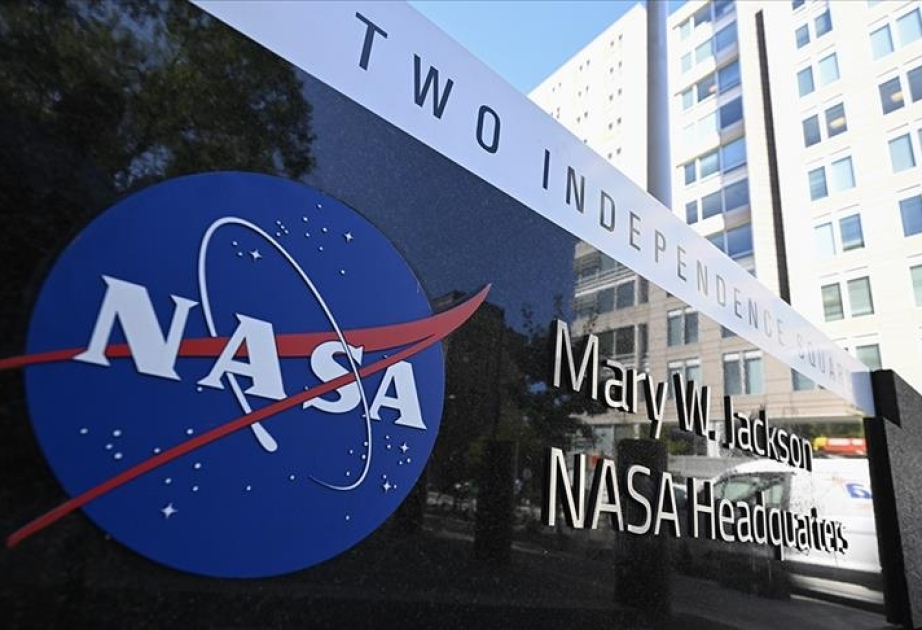The US space agency NASA has been greatly contributing to space science since its establishment in 1958, from the space race between the US and the Soviet Union during the Cold War that led to the first crewed Moon landing in 1969 to the search for signs of life on Mars.
According to Anadolu Agency, the US established the National Aeronautics and Space Administration (NASA) during the Cold War to bring together the nation's civil and scientific space programs under one roof. NASA’s goal was to send the first humans to the Moon in its early years.
Today’s NASA is observing space and the Sun with various probes and telescopes while exploring Mars to find signs of life.
During US President John F. Kennedy’s tenure, the Apollo program was launched to send humans to the Moon and return them safely to Earth by 1970. Only six of the 17 planned missions actually made it to the lunar surface.
For the famous Apollo 11 mission, astronauts Neil Armstrong, Michael Collins and Edwin “Buzz” Aldrin were launched into space inbound for the Moon on July 16, 1969, with Armstrong and Aldrin landing on the surface on July 20 and Collins remaining in lunar orbit in the command module.
“That’s one small step for a man, one giant leap for mankind,” said Armstrong as he stepped outside the spacecraft to be the first human to walk on the lunar surface. “Magnificent desolation,” he called it.
Twelve astronauts set foot on the Moon’s surface as a part of NASA’s Apollo program, which concluded in 1972 with the Apollo 17 mission.
NASA is now preparing to land humans on the Moon again after 53 years.
The Artemis I mission -- the first phase of the Artemis program that came to the fore nearly half a century after humans roamed the lunar surface -- was launched without a crew in November 2022. The Orion spacecraft orbited the Moon for 25.5 days and splashed down in the Pacific Ocean on Dec. 11.
The Artemis II mission will be a crewed mission. A team of four astronauts will reach lunar orbit and return to Earth without landing on the Moon.
The mission, which will take around 10 days, is set to take place in April 2026 to test Orion’s life support systems and maneuverability for a 10,300-kilometer (6,400-mile) journey to the Moon.
The Artemis III mission, provided that the non-landing mission concludes successfully, will take human astronauts to the Moon’s south pole for exploration for the first time.
The Artemis program is aimed at laying the foundation for long-term space missions that will one day take humans to Mars.
NASA has been searching for signs of life on Mars for some time now. One of its early explorations programs, the Mariner series, involved uncrewed missions to Mercury, Venus and Mars between 1962 and 1973.
The Mariner 9 mission was the first time that a spacecraft entered the Martian orbit. The mission led to the discovery of the tallest volcanoes and large canyons -- a stark difference from what was previously believed about the Martian surface, as it was likened to that of the Moon’s.
The Mars exploration rovers Curiosity and Perseverance investigated the Martian soil to find out whether water once existed on the planet. The Curiosity rover, which landed on Mars in 2012, collected data on the planet’s climate conditions while seeking traces of water, while the Perseverance rover, which landed on Mars in February 2021, is still operating, collecting samples.
Experts say these samples may answer whether microbial life existed on Mars in the past.
NASA is keeping tabs on planets, stars and other space phenomena like nebulae outside of our galaxy via its space telescopes.
The Kepler Space Telescope, launched in 2009, discovered planets orbiting other stars outside of our Solar system. It was put into retirement in 2018.
The Hubble Telescope, since its launch in 1990, has provided images of stars, black holes, distant galaxies and space phenomena like the Eagle Nebula, from which photographs such as the Pillars of Creation were taken. Hubble is still in operation and celebrated its 35th anniversary in April this year.
The James Webb Space Telescope, launched in 2021, is designed to observe the universe in infrared light, allowing it to study distant galaxies, the early universe, stars, exoplanets and young galaxies with unprecedented detail.

















